.
![Taking Refuge | by rickele]()
![Taking Refuge | by rickele]()
![Taking Refuge | by rickele]()
![monuments | by el-toro]()
![monuments | by el-toro]()
![monuments | by el-toro]()
![Untitled | by patrickjoust]()
![Untitled | by Missy Prince]()
![DSCF1813 | by Le Duc Giang]()
![DSCF1813 | by Le Duc Giang]()
![DSCF1813 | by Le Duc Giang]()

National Wildlife Refuge near Willows, California


National Wildlife Refuge near Willows, California
![]()
![File:Woodstock-Wolcott-snowy-night.jpeg]()
Center of town. Woodstock, Vermont. "Snowy night": photo by Marion Post Wolcott, 1940 (Farm Security Administration/Office of War Information Collection, Library of Congress)
![Untitled | by Missy Prince]()
![Untitled | by Missy Prince]()
![Untitled | by Missy Prince]()
Stuart Ross: VARIOUS RECORDS (POEM FOR JANUARY 1, 2018)
Open one eye and then the other. But when you open
the second one, close the first one. This way, you give each
the second one, close the first one. This way, you give each
eye its day in the sun. The sun glints
off the desert of snow that covers your driveway.
The streets are empty. Your favourite record
is playing in the sky. Wisps of clouds occasionally
muffle the sound. This is the first day.
One of your eyes, maybe your left, goes out
to shovel, while the other, likely your right,
stays in and makes breakfast. Butter smeared
on a dark rye plus genmai tea, with pieces of walnut
floating on top. Right now, the catastrophe seems
very far away. Your phone rings. Someone wants
to talk with you about a particular page in a book
you either wrote or read: the connection is bad.
But all words are good, it doesn’t matter what
anyone says, so long as they say it, and you hear
something. Let one ear listen and then the other.
It is true that there are people you once knew
who are no longer alive. It doesn’t mean you can’t
hug them or tell them about a painting you saw
or laugh at their jokes. One of the jokes hinges
on “bird’s eye view” vs. “birds I view.” And by now
your impeccable driveway is flanked by huge
berms of snow and you are using a spoon to get
at the last few walnut pieces from the bottom
of your mug. You are only one person. The earth
is covered in individuals. Various records
play in the sky.
off the desert of snow that covers your driveway.
The streets are empty. Your favourite record
is playing in the sky. Wisps of clouds occasionally
muffle the sound. This is the first day.
One of your eyes, maybe your left, goes out
to shovel, while the other, likely your right,
stays in and makes breakfast. Butter smeared
on a dark rye plus genmai tea, with pieces of walnut
floating on top. Right now, the catastrophe seems
very far away. Your phone rings. Someone wants
to talk with you about a particular page in a book
you either wrote or read: the connection is bad.
But all words are good, it doesn’t matter what
anyone says, so long as they say it, and you hear
something. Let one ear listen and then the other.
It is true that there are people you once knew
who are no longer alive. It doesn’t mean you can’t
hug them or tell them about a painting you saw
or laugh at their jokes. One of the jokes hinges
on “bird’s eye view” vs. “birds I view.” And by now
your impeccable driveway is flanked by huge
berms of snow and you are using a spoon to get
at the last few walnut pieces from the bottom
of your mug. You are only one person. The earth
is covered in individuals. Various records
play in the sky.
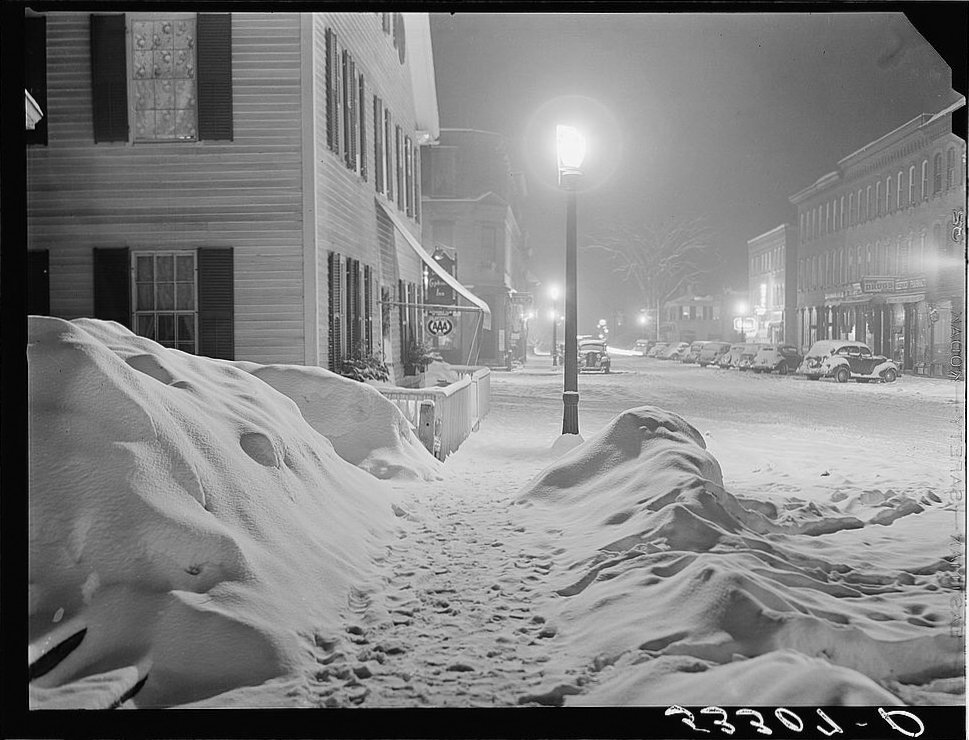
Center of town, Woodstock, Vermont. Snowy night: photo by Marion Post Wolcott, March 1940 (Farm Security Administration/Office of War Information Collection, Library of Congress)

Center of town. Woodstock, Vermont. "Snowy night": photo by Marion Post Wolcott, 1940 (Farm Security Administration/Office of War Information Collection, Library of Congress)









DSCF1813: photo by Giảng Lê Đức, 2 May 2017

DSCF1813: photo by Giảng Lê Đức, 2 May 2017

DSCF1813: photo by Giảng Lê Đức, 2 May 2017
![Doorway | by ADMurr]()
![Steel | by ADMurr]()
![]()
Scott's Run, West Virginia. Peter Percupu, Roumanian miner, unemployed, known in Scott's Run as Ground Hog. Too old to find employment in the mines, March 1937
![]()
![]()
Scott's Run, West Virginia. Chaplin Hill. This scene is typical of many camps built near the mine. In the background can be seen several of the government sanitary privies. These houses are multiple dwellings which accommodate several families. It is one of the few camps on Scott's Run which affords space for hogs and garden, 1936
![]()
Scott's Run, West Virginia. Chaplin Hill Mine Tipple. This mine as bankrupt and closed during the summer of 1936. The company was reorganized and began to operate under new management in November 1936, 1936
![]()
Scott's Run, West Virginia. Cassville, mine tipple. This mine is operating and supplies work for three separate camps (Cassville, New Hill, and the Patch). To the left of picture is shown one of the government privies built by WPA workers in a sanitation campaign organized to eliminate the old typical filthy mine camp toilets, March 1937
![]()
Scott's Run, West Virginia. Worked out coal mine near Pursglove mine No. 4 camp. Scene taken from main highway. This scene is typical of a dozen or more mines that have been closed and left to decay in the community. Note trees killed by mine operations and mine cars left to the elements, March 1937
![]()
Scott's Run, West Virginia. Bertha Hill Camp. The mine in this camp has been bankrupt and changed hands several times in the last two years. In the summer of 1936 this camp was considered abandoned; in December the mine, under new management, began to operate, March 1937
![]()
Scott's Run, West Virginia. Outdoor privy. Scene taken from the main highway. The stream is Scott's Run. This privy is typical of many improvised outdoor toilets on Scott's Run. It is made from an old automobile; the house at left is also improvised by the family who occupy it. A stream of water flows past the privy into Scott's Run, March 1937
![]()
Scott's Run, West Virginia. Pursglove Mines Nos. 4 and 5. Scene taken from main highway shows typical hillside settlements. Houses shown are for supervisory staff. Camp one of the best on Scott's Run, March 1937
![]()
![]()
Scott's Run, West Virginia. Another view of Pursglove Mines Nos. 3 and 4, March 1937
![]()
Scott's Run, West Virginia. The Shack Community Center. Scene is typical of crowded space. In center of valley the stream is Scott's Run Creek. The Shack is a community center sponsored by a religious organization, March 1937
![]()
Scott's Run, West Virginia. Pursglove No. 2. Scene taken from main highway shows company store and typical hillside camp, March 1937
![]()
Scott's Run, West Virginia. Jere, mine tipple. Mine bankrupt and closed since December 1936. The camp of this mine is considered a stranded community, March 1937
![]()
Scott's Run, West Virginia. The Patch. One of the worst camps in Scott's Run. The stream is an auxiliary branch that flows into Scott's Run can be seen towards the right of this picture. These houses were originally built as single bachelor apartments; there are from six to eight separate housekeeping units in the buildings. Many of them are now occupied by families living in one room, March 1937
![]()
Scott's Run, West Virginia. The Patch. One of the worst camps in Scott's Run. The stream is an auxiliary branch that flows into Scott's Run. The main valley of Scott's Run can be seen towards the right of this picture. These houses were originally built as single bachelor apartments; there are from six to eight separate housekeeping units in the buildings. Many of them are now occupied by families living in one room, March 1937
![]()
Scott's Run, West Virginia. Pursglove No. 5. Scene taken from main highway shows typical hillside camp. The houses are multiple dwellings, March 1937
![]()
![]()
![]()
Untitled: photo by Beerbrain/Ronny Perry, 16 December 2017



Scott's Run, West Virginia. Peter Percupu, Roumanian miner, unemployed, known in Scott's Run as Ground Hog. Too old to find employment in the mines, March 1937
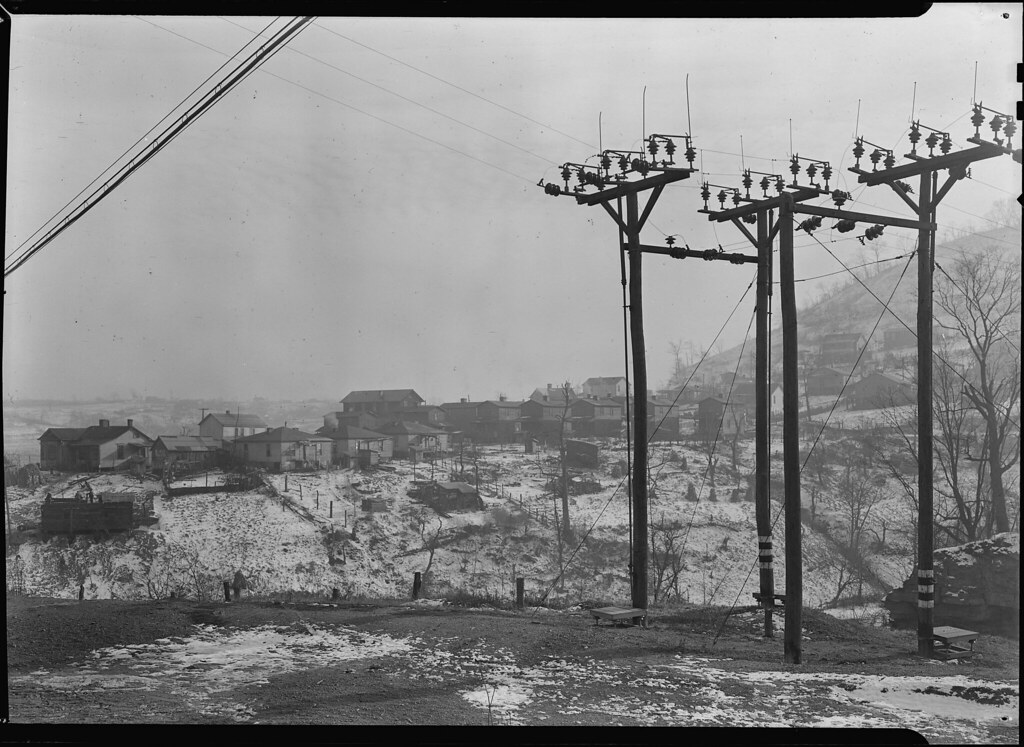
Scott's Run, West Virginia. Troop Hill -- an abandoned coal camp on Scott's Run, West Virginia, December 22, 1936. Mine closed early in 1936. Scene taken from main highway entering Scott's Run, March 1937
"The past speaks..."
The past speaks to us
It says hello glad to meet you
We say we haven't got time to stop and talk
It says ok no worries Later but hey
We say we haven't got time to stop and talk
It says ok no worries Later but hey
Come on
Just for one tiny minute
As you go
Tell us please so that we may know
What have we done
To deserve what you have made
Of what ever it was
We might once have had or thought we had
In common
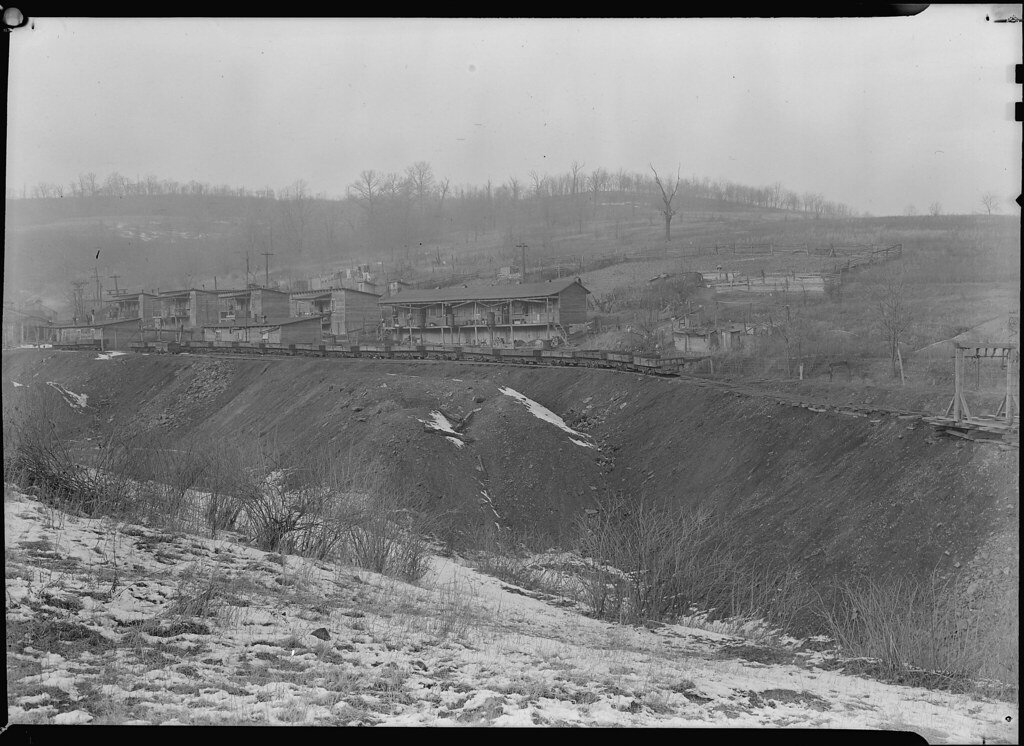
Scott's Run, West Virginia. Chaplin Hill. This scene is typical of many camps built near the mine. In the background can be seen several of the government sanitary privies. These houses are multiple dwellings which accommodate several families. It is one of the few camps on Scott's Run which affords space for hogs and garden, 1936
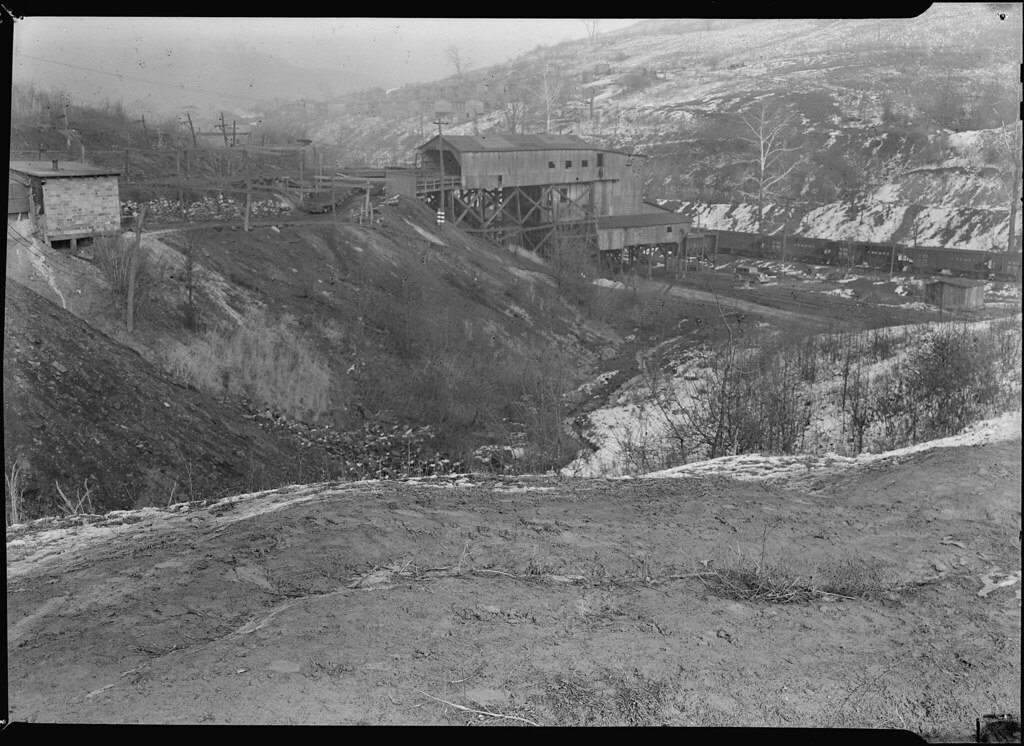
Scott's Run, West Virginia. Chaplin Hill Mine Tipple. This mine as bankrupt and closed during the summer of 1936. The company was reorganized and began to operate under new management in November 1936, 1936

Scott's Run, West Virginia. Cassville, mine tipple. This mine is operating and supplies work for three separate camps (Cassville, New Hill, and the Patch). To the left of picture is shown one of the government privies built by WPA workers in a sanitation campaign organized to eliminate the old typical filthy mine camp toilets, March 1937
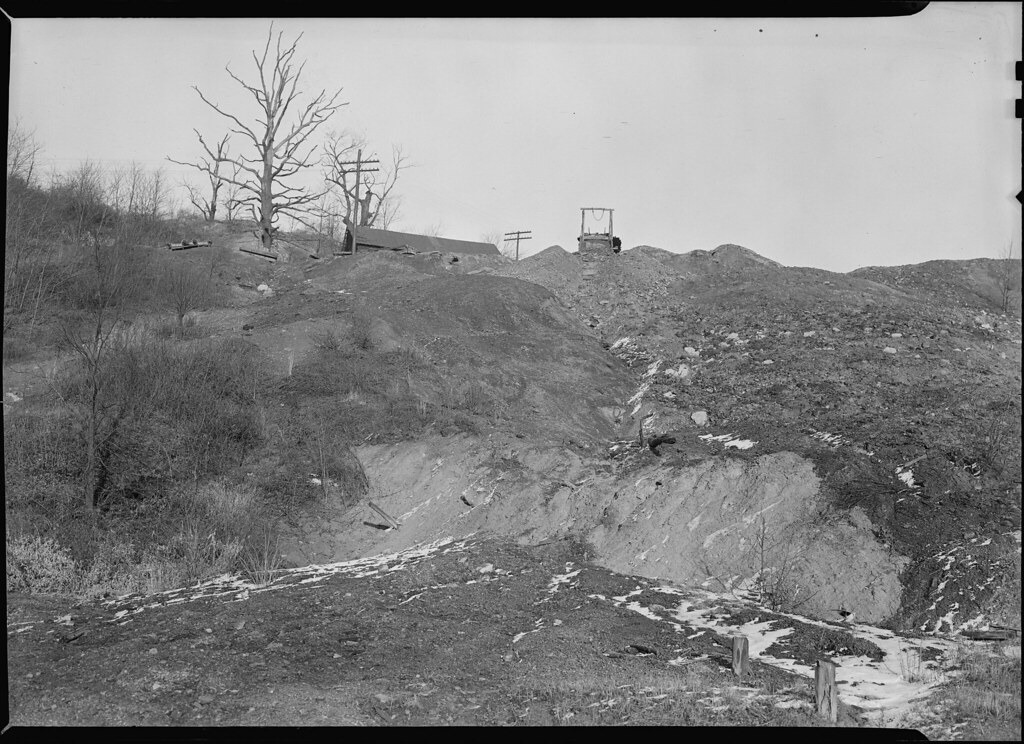
Scott's Run, West Virginia. Worked out coal mine near Pursglove mine No. 4 camp. Scene taken from main highway. This scene is typical of a dozen or more mines that have been closed and left to decay in the community. Note trees killed by mine operations and mine cars left to the elements, March 1937

Scott's Run, West Virginia. Bertha Hill Camp. The mine in this camp has been bankrupt and changed hands several times in the last two years. In the summer of 1936 this camp was considered abandoned; in December the mine, under new management, began to operate, March 1937

Scott's Run, West Virginia. Outdoor privy. Scene taken from the main highway. The stream is Scott's Run. This privy is typical of many improvised outdoor toilets on Scott's Run. It is made from an old automobile; the house at left is also improvised by the family who occupy it. A stream of water flows past the privy into Scott's Run, March 1937

Scott's Run, West Virginia. Pursglove Mines Nos. 4 and 5. Scene taken from main highway shows typical hillside settlements. Houses shown are for supervisory staff. Camp one of the best on Scott's Run, March 1937
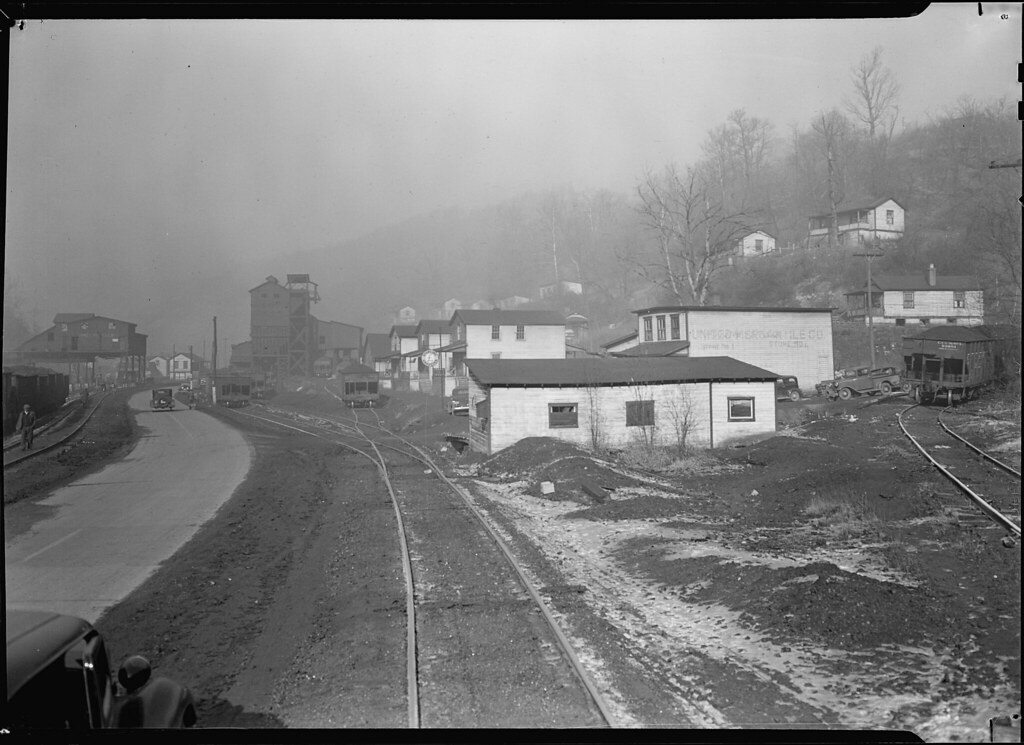
Scott's Run, West Virginia. Pursglove Mines Nos. 3 and 4. This is the largest company of Scott's Run. Scene shows main Scott's Run Highway and atmosphere loaded with coal dust and typical of Scott's Run on any working day, March 1937
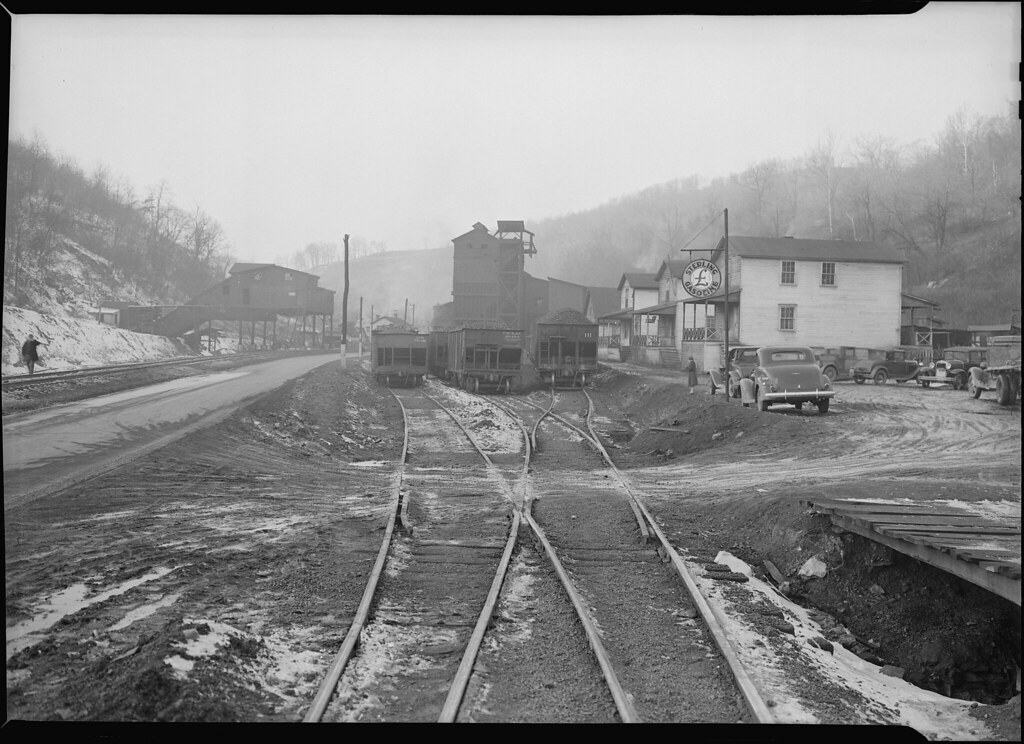
Scott's Run, West Virginia. Another view of Pursglove Mines Nos. 3 and 4, March 1937

Scott's Run, West Virginia. The Shack Community Center. Scene is typical of crowded space. In center of valley the stream is Scott's Run Creek. The Shack is a community center sponsored by a religious organization, March 1937
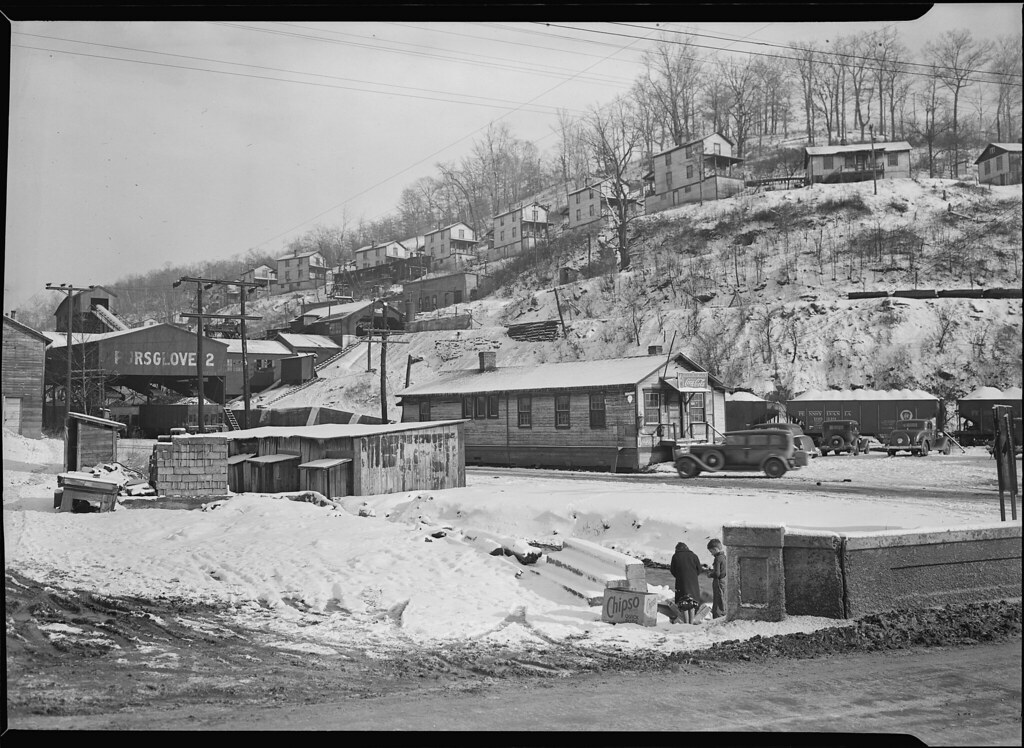
Scott's Run, West Virginia. Pursglove No. 2. Scene taken from main highway shows company store and typical hillside camp, March 1937

Scott's Run, West Virginia. Jere, mine tipple. Mine bankrupt and closed since December 1936. The camp of this mine is considered a stranded community, March 1937

Scott's Run, West Virginia. The Patch. One of the worst camps in Scott's Run. The stream is an auxiliary branch that flows into Scott's Run can be seen towards the right of this picture. These houses were originally built as single bachelor apartments; there are from six to eight separate housekeeping units in the buildings. Many of them are now occupied by families living in one room, March 1937

Scott's Run, West Virginia. The Patch. One of the worst camps in Scott's Run. The stream is an auxiliary branch that flows into Scott's Run. The main valley of Scott's Run can be seen towards the right of this picture. These houses were originally built as single bachelor apartments; there are from six to eight separate housekeeping units in the buildings. Many of them are now occupied by families living in one room, March 1937

Scott's Run, West Virginia. Pursglove No. 5. Scene taken from main highway shows typical hillside camp. The houses are multiple dwellings, March 1937

Scott's Run, West Virginia. Woman gathering coal from mine refuse, March 1937
![]()
Scott's Run, West Virginia. Woman gathering coal from mine refuse, March 1937
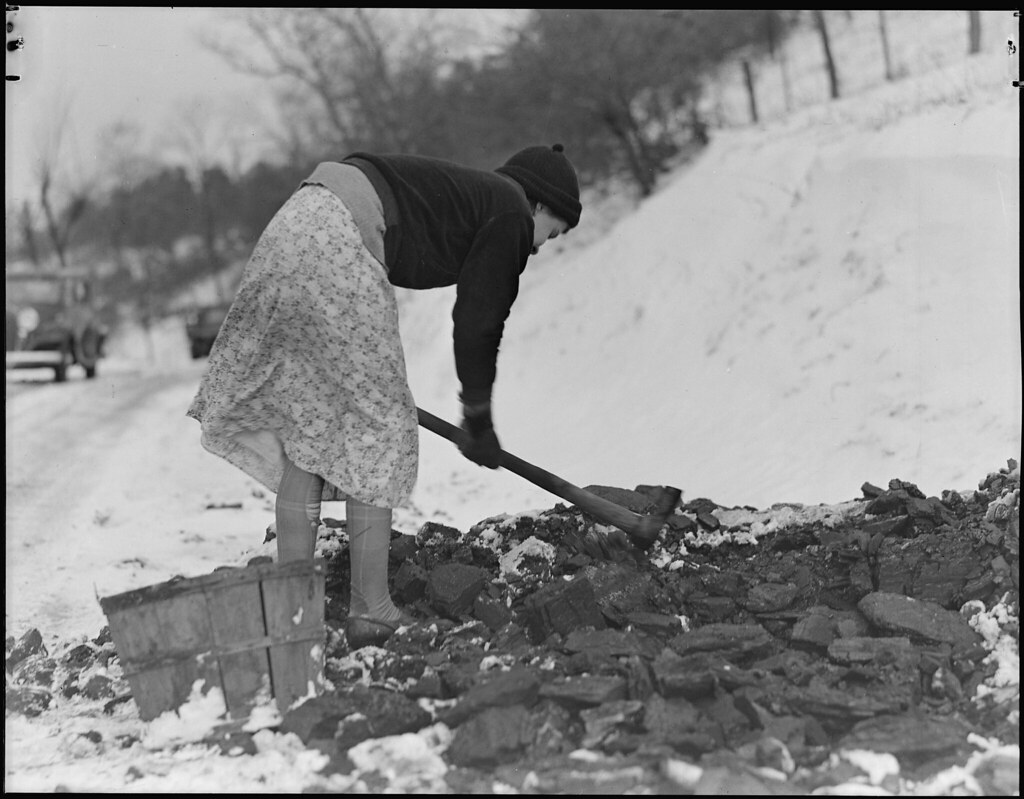
Scott's Run, West Virginia. Woman gathering coal from mine refuse, March 1937
Scott's Run photos by Lewis Wickes Hine (1874-1940) from US National Archives
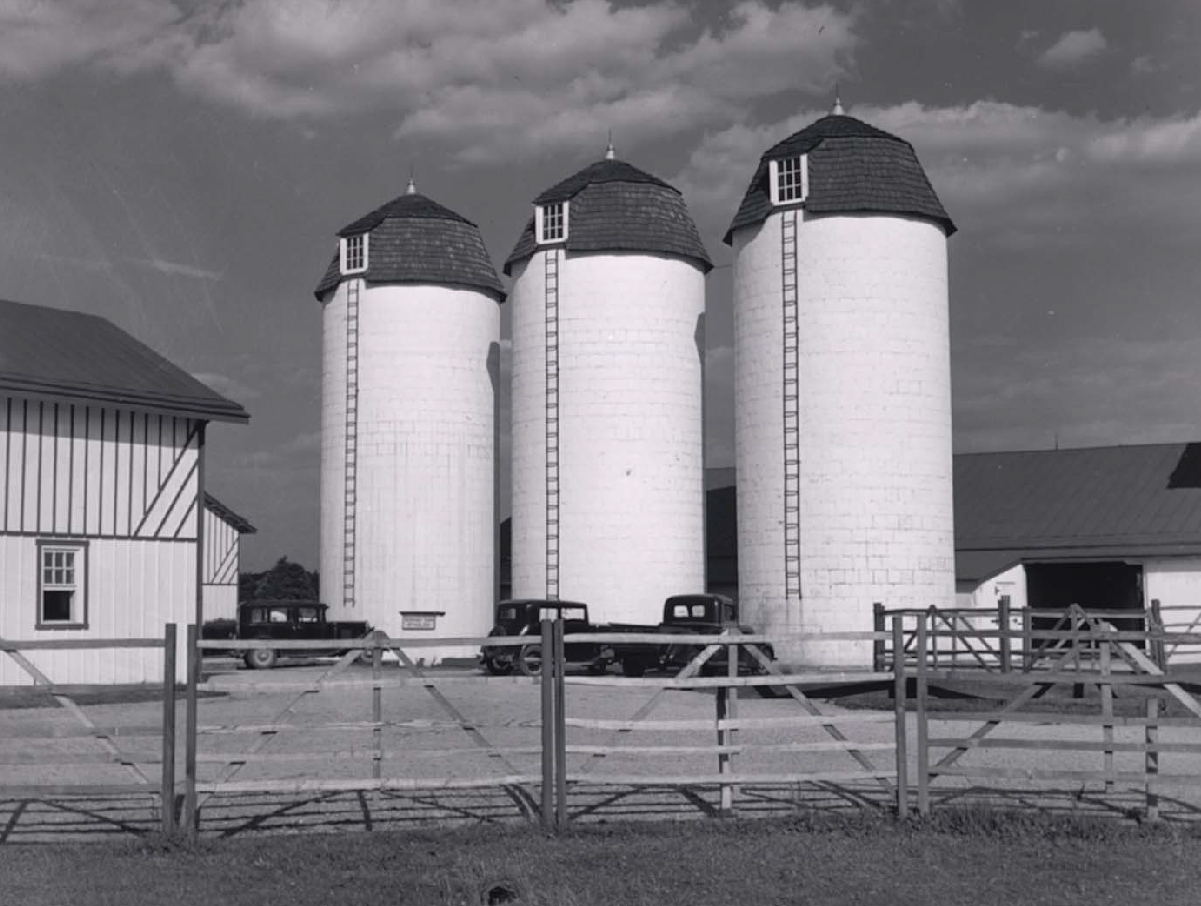
Barn and silos on rich farmland, Bucks County, Pennsylvania: photo by Marion Post Wolcott, 1939 (Smithsonian Museum of American Art)

Proprietor of a poolhall playing cards, Woodstock, Vermont: photo by Marion Post Wolcott, 1939 (Smithsonian Museum of American Art)
![snow | by Rob Van Raemdonck]()
![Untitled | by Beerbrain/Ronny Perry]()


Untitled: photo by Beerbrain/Ronny Perry, 16 December 2017





























